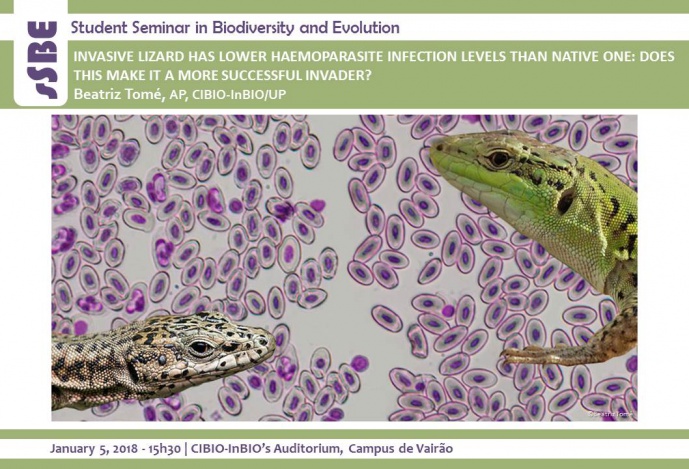INVASIVE LIZARD HAS LOWER HAEMOPARASITE INFECTION LEVELS THAN NATIVE ONE: DOES THIS MAKE IT A MORE SUCCESSFUL INVADER?

STUDENT SEMINAR IN BIODIVERSITY AND EVOLUTION

Biological invasions are identified as one of the major threats to biodiversity. But one element of this phenomena that remains poorly understood is the role of parasites. I will present the results from a study comparing the infections by a blood parasite (haemogregarines) in native and non-native of wall lizards from Lisbon (Podarcis virescens and Podarcis sicula).
After taking the MSc in Biodiversity, Genetics and Evolution from the University of Porto and working as a technician in CIBIO-InBIO, Beatriz enrolled in the BIODIV PhD program. Currently in her fourth year, she has been studying the phylogenetics of different parasites infecting reptiles, with particular focus on haemogregarines infecting lizards of the Canary Islands.
[Host: Ana Perera, Applied Phylogenetics]
Image credits: Beatriz Tomé